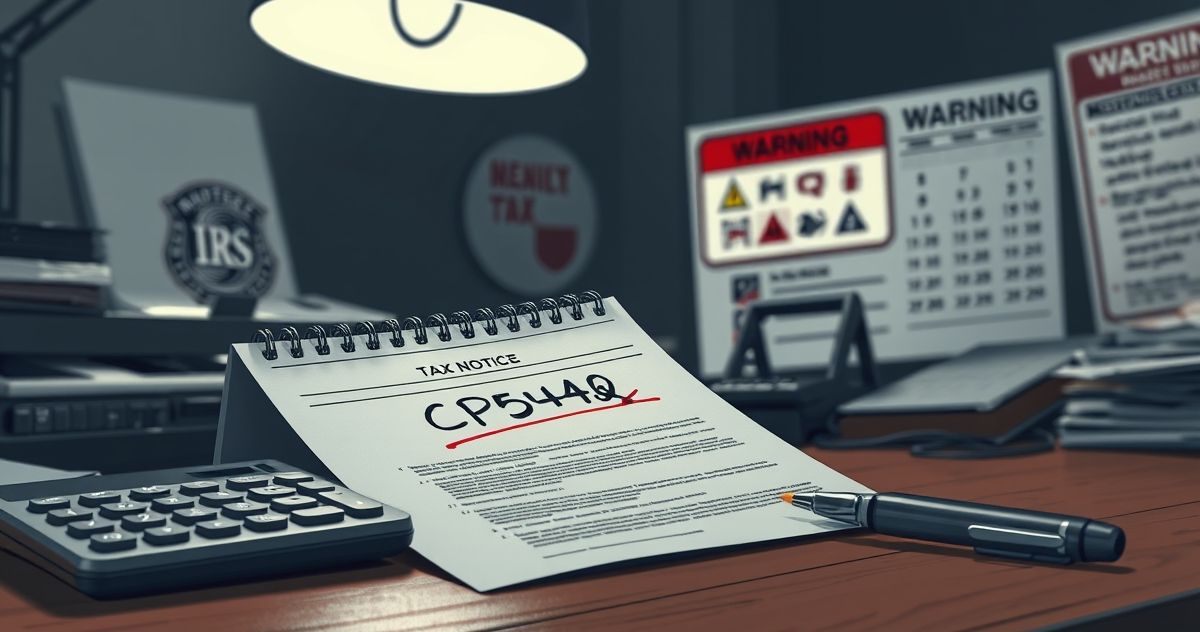What is the CP504AQ Notice?
The CP504AQ Notice is an official communication sent by the Internal Revenue Service (IRS) to taxpayers with outstanding tax debts. This notice serves as a serious warning indicating that immediate action is necessary to address the unpaid balance. Failure to respond promptly can lead to enforced collection actions by the IRS, such as levies or asset seizures.
Primary Purpose of the CP504AQ Notice
The primary purpose of the CP504AQ Notice is to alert taxpayers about the urgency of their unpaid tax obligations. It acts as the IRS’s last step before more aggressive collection measures commence, offering taxpayers one final opportunity to settle their debts voluntarily. This notice typically follows earlier communications regarding overdue taxes, signaling that the IRS is stepping up its efforts to collect the outstanding amounts.
Key Features of the CP504AQ Notice
- Amount Due: The notice clearly states the total amount of unpaid taxes, including interest and penalties that have accrued on the original amount.
- Demand for Payment: It includes a firm request for immediate payment and provides details on how to make the payment to avoid further actions.
- Consequences of Non-Compliance: It outlines the potential consequences if the taxpayer fails to pay, such as the potential seizure of property or garnishment of wages.
- Contact Information: The notice provides contact information and instructions for taxpayers to reach out to the IRS if they have questions or need assistance in resolving their tax debt.
Relevant Filing or Compliance Requirements
The CP504AQ Notice is not an initial notification of tax debt; it follows earlier notices about unpaid balances. By the time a taxpayer receives this notice, prior opportunities to address the debt have already been extended. Compliance, at this stage, involves immediate payment in full or contacting the IRS to arrange for a payment plan or other solutions. Failure to adhere to these requirements can exacerbate the taxpayer’s situation.
Penalties or Consequences for Non-Compliance
If the CP504AQ Notice is ignored or left unaddressed, the IRS may engage in enforcement actions that can have severe financial implications for the taxpayer. These actions can include:
- Bank Levies: The IRS can levy funds directly from bank accounts to cover the unpaid tax amount.
- Wage Garnishments: The IRS may garnish wages, taking a portion of the taxpayer’s income directly from their employer.
- Seizure of Assets: The IRS may seize assets, including personal property, to satisfy the tax debt.
Additionally, non-compliance can result in increased penalties and interest, further inflating the total balance owed.
Importance or Significance in Tax Resolution
The CP504AQ Notice is an essential component of the IRS’s collection process, marking a critical juncture in tax resolution. It provides taxpayers with a final opportunity to avoid compulsory collection activities, which can have adverse effects on their financial situation. Responding promptly to this notice is not only vital for preventing legal actions but also for minimizing financial penalties associated with unpaid taxes.
Engaging proactively with the IRS upon receiving the CP504AQ can lead to more flexible solutions, such as installment agreements or offers in compromise, allowing taxpayers to manage their financial obligations more efficiently. Understanding the gravity of this notice and taking decisive steps to resolve the underlying tax debt can significantly impact one’s fiscal health and future dealings with the IRS.
Conclusion
The CP504AQ Notice serves both as a warning and an opportunity for taxpayers with unresolved tax liabilities. While it underscores the seriousness of the taxpayer’s financial obligations, it also emphasizes the importance of seeking resolution before enforcement actions occur. It is thus crucial for taxpayers to address this notice promptly, explore available resolution options, and engage with the IRS to protect their financial standing and abide by tax compliance requirements.

